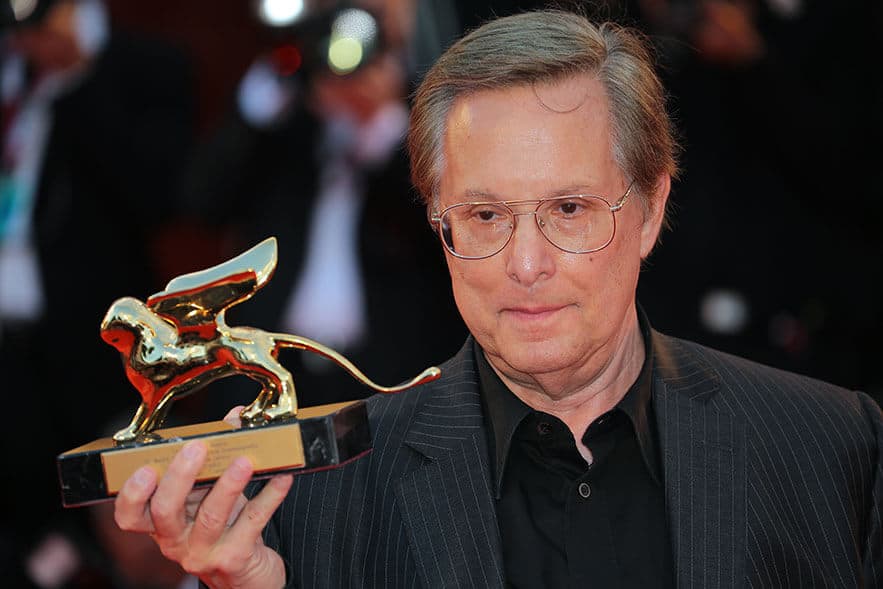BONUS: The Top-8 Must-See Movies from One of the Best Classic Hollywood Directors.
William Friedkin is one of the biggest masters of American cinematography. His movie The Exorcist (1973) is considered a classic Hollywood horror film, and his Oscar-winning thriller The French Connection (1971) put him on a par with Francis Ford Coppola, Woody Allen and Martin Scorsese.
Friedkin’s career wasn’t stable. After huge successes in the early ‘70s, the director’s later works were badly received. And only recently have some of his long-shot films been given a new life by modern fans. For the last couple of years Mr. Friedkin has been traveling around the world, presenting his film Sorcerer at film festivals. It was shot back in ‘77, and critics panned it when it was first released.
Youth Time attended an interview with William Friedkin at the Karlovy Vary International Film Festival and participated in a conversation about the impact of European cinema on the history of America, the spirit of the time and life mistakes that “are expensive, but mean nothing.”
You made your first movie in 1965. During almost 50 years of an active career you caught a lot of stages in cinematography development. From a time when Alfred Hitchcock admonished you for not wearing a tie while directing to a time of total freedom in art. Tell us your opinion about the phenomenon of zeitgeist (the spirit of a time). Have you ever faced it in your career?
Absolutely! When one of my best and popular movies nowadays, The Sorcerer came out first in 1977 it was totally unsuccessful. That’s 37 years ago and now it’s playing all over the world. It plays now everywhere. The reason is a new zeitgeist, different audience, different critics, different film historians than when it came out. I don’t compare myself to Vincent Van Gogh for example, but you may! You can compare me to Vincent Van Gogh, if you want (laughs). But here was Vincent Van Gogh, one of the world’s greatest painters. You can’t buy a Van Gogh for less than ten million dollars and many have sold for over 100 million dollars, but in his lifetime he couldn’t sell a painting. Why? I’m going to try and tell a joke and see if it’s funny to you. It’s hard for an American to tell a joke to European but I try and see if it comes across. There used to be in America a comedian named Johnny Carson. Did you ever hear of Johnny Carson? One day I turned on the TV at night and here was Johnny Carson and he said, “A painting sold at auction today for 80 million dollars.” Of course, it was a Vincent Van Gogh. But what most people don’t know is that when Van Gogh made this painting he was in a mental institution. He was in an insane asylum. And the reason he was in an insane asylum is because he would say, ‘One day I’m going to sell a painting’ (laughs). So, you know what I mean? In his day nobody wanted to buy a Van Gogh and he was crazy because of that. Now look. So now my film that I made 37 years ago is popular a way more, than when they came out.
But anyway as a minimum you re-release the film in digital print to actualize it for a modern audience.
That’s true. Look, a lot of people don’t like what I say about this. There are a lot of purists, you know, guys who think 35mm is the only true and pure form of cinema. I find this to be ridiculous. It’s bullshit, as we say! 35mm prints start to fade the moment they are created. They lose their colours eventually. There’s dirt all over them. The sound! The soundtrack gets dirty and it has a kkrrsshh sound all over it. The digital image is pure! The digital image is what you see through the lens of the camera. In digital, you get what you see. With 35mm picture, no print was perfect. Not one reel of a print was perfect because the developer that you ran the negative through was different at all times because of the different composition of the water in the developer. One reel would come off the printer bluish, another greenish and I remember rejecting and rejecting hundreds of reels to get one. And still you wouldn’t know what you got until a day or two later when the film would come back. Now we don’t do that. You just shoot this.
So what do you think it is about today’s audiences that now have a hunger for movies from the new Hollywood of the ‘70s?
Certainly I don’t know; there’s no guarantee that a picture will ever come back once it’s released. That is true that a great many people – seem to like the films of the 1970s. But for me the golden era in Hollywood was the 1940s and the 1950s, the American musical. There have been no better films made than American musicals with Gene Kelly and Fred Astaire. These are great films that belong only to that American culture. It’s dead now because those movies were based on what was the popular music of America at that time and that music is no longer popular. Those composers are dead and they’re obviously not writing, and there’s new music which does not lend itself as well to a musical film.
Somebody described the later period in America as the dumbing down of the culture. I don’t know whether that’s true or not; I think it probably is. Some cultures start at the very top, like the German culture, which produced Goethe and Schiller and then Thomas Mann and so many of the great classic works of literature, and now, who? I don’t know. But obviously nobody can write like Goethe or Schiller today. Another example, Franz Kafka, to his own people he died in obscurity. He didn’t want his works to survive. He asked the executor of his will to burn all of his works and thank God he didn’t or we would not have Kafka today. But who in the hell is writing like this today, I ask you? So I don’t now have a certain answer on that question.
What part of filmmaking do you enjoy the most?
Editing. Yeah, I enjoy the editing most. A film is made three times. At least three times! One version is in the script. The next version is when you go out to shoot that script, to photograph it with actors. And the actors make changes or you make changes. You see something happening, something interesting that you didn’t plan, but you keep it and it changes. Then it’s made again in the editing room. For example, in The French Connection, which ends very ambiguously, I found that ending in the editing room. That wasn’t in the script. I found an ending that did not explain a damn thing because I didn’t invite the audience to see this film as a history lesson or as a documentary. I changed the film in the editing room.
You wrote a book called The Friedkin Connection, which is a memoir by Mr. William Friedkin. I don’t want to talk about it in my words because I’m sure you should say it, so could you please talk about things you missed out on in life?
Yeah, I speak about all of the mistakes I made and the opportunities that I lost. To be brief, I will give two examples. Once, I was offered the opportunity to own one third of a young fighter who was just coming up. He was being trained by a great fight trainer named Cus D’Amato. He told me about this young man, 15 years old, who was going to be a heavyweight champion and I said, “Cus, it’ll be years before he’s… – I mean you’re a great trainer but who is this guy?” Well, guys name was Mike Tyson (laughs). And so I passed on ownership of him.
And then a number of years later, Francis Ford Coppola, great friend of mine and partner at the time, came to me with a script and he said, “Here, we can produce this script. Our company can produce this.” I read the script. “This is awful! What is this?” I said. “Are you going to direct this?” And he said, “No. But we can produce it.” It was called Star Wars! (laughs). I said, “You’re not going to direct it?” He said, “No. George is.” George was his assistant. George Lucas. I said, “He can’t direct this. George Lucas cannot direct at all. I don’t want to invest in it.” So, if I had invested in it, I would own a lot of property today (laughs). So there are many opportunities like that that I begin my book with, explaining what a fool I actually was.
And at the end tell us a few words about modern cinematography and its trends.
I love that young people can do what I could never do when I grew up. They can buy a camera, shoot the film, edit it, add soundtrack and upload it on YouTube. I could never have done that. In my day, you had to take an entry level job, a very small job, for a studio or a television station. And you might never have been able to make a film. Ever! You might have one day got to work on a film, maybe, if you were lucky. Today, every young person can make cinema. It is a great advance and big joy for me.
William Friedkin’s list of must see movies:
Citizen Kane by Orson Welles
The Treasure of the Sierra Madre by John Huston
All about Eve by Joseph L. Mankiewicz (“I think it is the best American screenplay ever written”, – W. Friedkin).
Rashomon by Akira Kurosawa
8½ and La Dolce Vita by Federico Fellini
Last Year at Marienbad by Alain Resnais
Closely Watched Trains by Jiri Menzel
Faust by Jan Svankmajer
Photo: Shutterstock
Support us!
All your donations will be used to pay the magazine’s journalists and to support the ongoing costs of maintaining the site.
Share this post
Interested in co-operating with us?
We are open to co-operation from writers and businesses alike. You can reach us on our email at [email protected]/[email protected] and we will get back to you as quick as we can.










